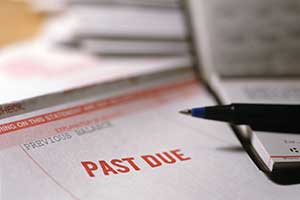
If you need a car but don’t have the credit score to qualify for a regular auto loan, you may be tempted to take out a subprime auto loan instead. This could prove to be a mistake, as the chances of financial problems resulting from these loans are growing, even to the point of endangering the economy. According to data from the Federal Reserve Bank of New York, delinquencies for subprime loans are nearing crisis levels at auto finance companies.
The Fed report stated that the more than 23 million consumers who hold subprime auto loans may find their credit reports are damaged even more if they default on their loans, and they may also encounter further financial difficulties should they wind up having their vehicle repossessed.
So, while taking a subprime loan may seem easy, under most circumstances it is not the preferred way to go. The experienced and compassionate Ohio bankruptcy attorneys at Fesenmyer Cousino Weinzimmer understand that financial problems can happen to the most hard-working and well-intentioned people. We offer a free consultation to examine your individual financial situation, your debts and your goals. We will help you get on the path to financial solvency and find the best ways to make sure you can afford that vehicle you need.
What is a Subprime Loan?
“Prime” borrowers are those people who have excellent credit and are likely to pay off their auto loans completely and on time. Auto dealerships and the banks they work with are happy to give them loans. Those with bad credit and who do not qualify for the “prime” category are considered to be “subprime” borrowers, as they have a high delinquency rate and default on loans, and they may wind up having their vehicles repossessed. About 20 percent of new-car loan originations are for borrowers that have a credit score below 620 and are considered subprime.
According to the New York Fed’s quarterly report on household debt and credit (https://finance.yahoo.com/news/subprime-auto-delinquency-near-crisis-160000311.html), almost 9.7 percent of subprime car loans made by non-bank lenders, mostly auto finance companies, became 90 or more days past due in the third quarter of 2017. This is the highest annualized rate in more than seven years and is considered a danger to the economy.
As a result of this increased risk, subprime loan lenders charge a higher interest rate, sometimes exceeding 23%. This can mean tens of thousands of dollars worth of additional interest payments to the borrower over the life of a longer term loan.
In addition, since most of the vehicles financed this way are used cars sold at used car lots, many of them have mechanical defects that may be hidden from the purchasers, who are now stuck with both high interest rates and high repair rates.
The result: Similar to what happened in the housing crisis, the millions of Americans who have subprime auto loans on cars that they cannot afford are pushed further into debt, wind up losing their vehicles, and may even be faced with bankruptcy.
When Does it Pay to Take a Subprime Loan?
While subprime loans have a higher interest rate than the prime rate offered on traditional loans, there are a few times when they may be a good idea. For example, if you are able to find a loan at a lower interest rate than your existing loans, such as on credit cards, you may be able to pay off the higher interest loans and lower your monthly payments. For this to work, you must shop around to find the lowest subprime loan rate possible and make sure you can afford the payments.
Alternative to Subprime Loans
Filing for bankruptcy may offer the greatest opportunity to rebuild your credit and eventually be a candidate for prime loans. If you are in a position where your other unmanageable bills are preventing you from qualifying for an acceptable auto loan then bankruptcy may be the fresh start you need.
In the alternative, if you are already in a subprime loan, bankruptcy authorizes ways to modify secured loans so that it may be more manageable to keep your assets.
For example, Chapter 7 allows you to avoid or redeem personal property by paying the value of the asset to the lienholder versus the loan amount. A Chapter 13 bankruptcy may allow you to cram down an auto loan to repay the value of the car versus the balance of the loan.
The two most common forms of bankruptcy are:
1) Chapter 7 bankruptcy –This type of bankruptcy is over quickly and will eliminate most non-secured debts. In Ohio, if you qualify for Chapter 7, you can automatically keep property that is protected by Ohio’s bankruptcy exemptions. While your bankruptcy trustee will liquidate nonexempt assets to pay creditors, if your assets are less than the exemptions allowed, you may be able to keep them all.
2) Chapter 13 bankruptcy – This is a reorganization and repayment plan, where you pay your creditors an agreed-upon amount over a three- to five-year period. You may get to keep the vast majority of your assets if you make the agreed-upon payments in a timely manner.
Contact Us For Help, Answers, And Peace Of Mind
The seasoned Ohio bankruptcy attorneys at Fesenmyer Cousino Weinzimmer offer a free consultation to examine your individual financial situation, your debts and your goals. Should bankruptcy be your best option, we will help you get on the path to financial solvency.
A free initial consultation and careful evaluation of your individual financial situation by the Ohio bankruptcy attorneys at Fesenmyer Cousino Weinzimmer will point you in the right direction and give you the information you need to help you decide on the debt-relief solution that is best for you. We know the courts and the system and are dedicated to helping you through your financial problems, preventing mistakes that can lead you further into debt.
Delaying can only make your situation worse, so call one of our conveniently located office branches at 614-228-4435 (Columbus), 937-222-7472 (Dayton), or 877-654-5297 (Cincinnati) or email today to set up your free consultation.


